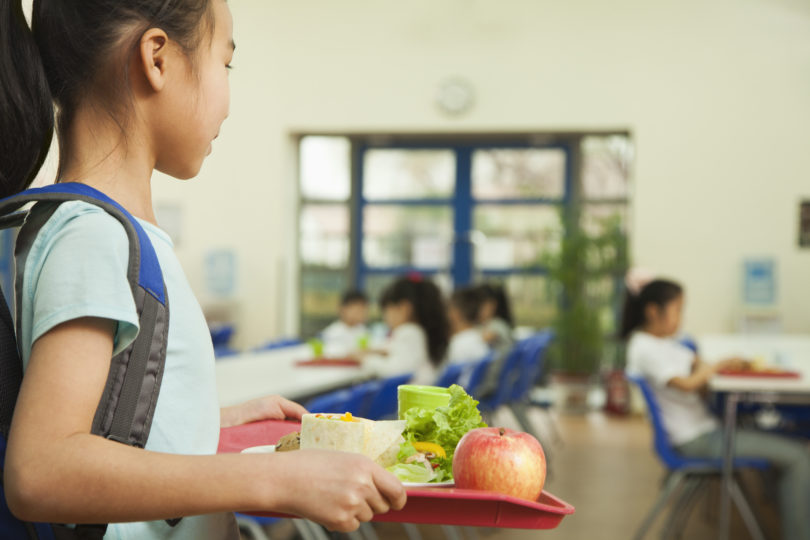Most children in the U.S. do not eat enough fruits and vegetables, some eating less than one serving of fruits and vegetables a day, according to the Centers for Disease Control and Prevention. Though there are multiple federal-level policies in place to ensure healthy options in school lunchrooms, these measures can’t guarantee that kids will choose the fruit or vegetable option, let alone eat it.
Now, new research from the University of Georgia suggests that fun can motivate kids to try new foods at lunchtime and ultimately eat more fruits and vegetables.
“There are many ways fun can be brought into the lunchroom,” said Janani Rajbhandari-Thapa, assistant professor of health policy and management at UGA’s College of Public Health and lead author on the study. “The lunchroom is not always thought of as a place where fun can be incorporated.”
Food marketers have been harnessing the power of play and fun for decades. Anyone who has seen an advertisement for kids’ foods—from Happy Meals to cereal—is familiar with how these companies use kid-friendly images and toys to make their products more appealing to children.
Public health interventions are beginning to adopt these tactics by associating healthy foods with kid-friendly images and objects, said Thapa.
Thapa’s study used stickers and small, inexpensive toys to incentivize kids at two low-income elementary schools to choose and eat more servings of fruits and vegetables. Over two weeks, Thapa and her team offered a token to students who selected and ate a fruit or vegetable serving that could be redeemed for a toy.
The students ate 2 1/2 times more servings of fruits and vegetables when the stickers and toys were introduced than they did before the study began.
The important question was whether the students would continue to select and eat more fruits and vegetables after the stickers went away. Thapa designed her intervention so that kids would try new foods and hopefully develop a taste for them.
“After the intervention, they went back to their original lunchroom environment, and we still saw an effect,” said Thapa, suggesting that the students formed a new eating habit that would stay with them for the long term.
Helping kids make the healthier choice in the split second it takes to grab an apple or a cookie is the philosophy of the smarter lunchroom approach, which uses simple, low-cost changes to the lunchroom that will help children make healthier choices.
It’s important to know how effective these policies are, said Thapa, especially in areas where the school is potentially the only place where students can access fresh, healthy foods. The lunchroom plays a vital, day-to-day role in students’ eating habits, and she would like to see more schools incorporate healthy eating interventions into the lunchrooms.
“Having this fun type of atmosphere and learning environment can promote healthy consumption as well as teach them at the same time,” said Thapa.
Thapa is one of 18 researchers who has received grants from the Cornell Center for Behavioral Economics in Child Nutrition Programs to evaluate Smarter Lunchroom Movements nudge techniques, and she plans to do more studies.
The study, “Nudges to Increase Fruits and Vegetable Consumption: Results from a Field Experiment,” appeared in the Journal of Child Nutrition and Management. It is available online here.
Conrad P. Lyford, a professor at Texas Tech University, was a co-author on this study.








